What I Learned from a 1400km Trip in the Note e-power NISMO S
公開日:2020.07.29

コンテンツ
Trying out Okutama
The next day we headed home but decided to take a detour. We’ve been to Hakone and Izu around Tokyo quite a bit, so I checked Wata-san’s blog for other suggestions.
The name that caught my eye was “Okutama Loop Road.” I remembered seeing it often in touring blogs from the Kanto area, so we decided to head there first.
We aimed for Uenohara IC on the Chuo Expressway. Despite heavy rain, the YOKOHAMA S Drive tires, which came with the new car, drained water well and made highway driving in the rain comfortable.
Even upon arrival at the Okutama Loop Road, the rain didn’t stop, so we carefully drove the wet winding roads. Fortunately, no other cars were out in such bad weather, so it was almost like having the road to ourselves.
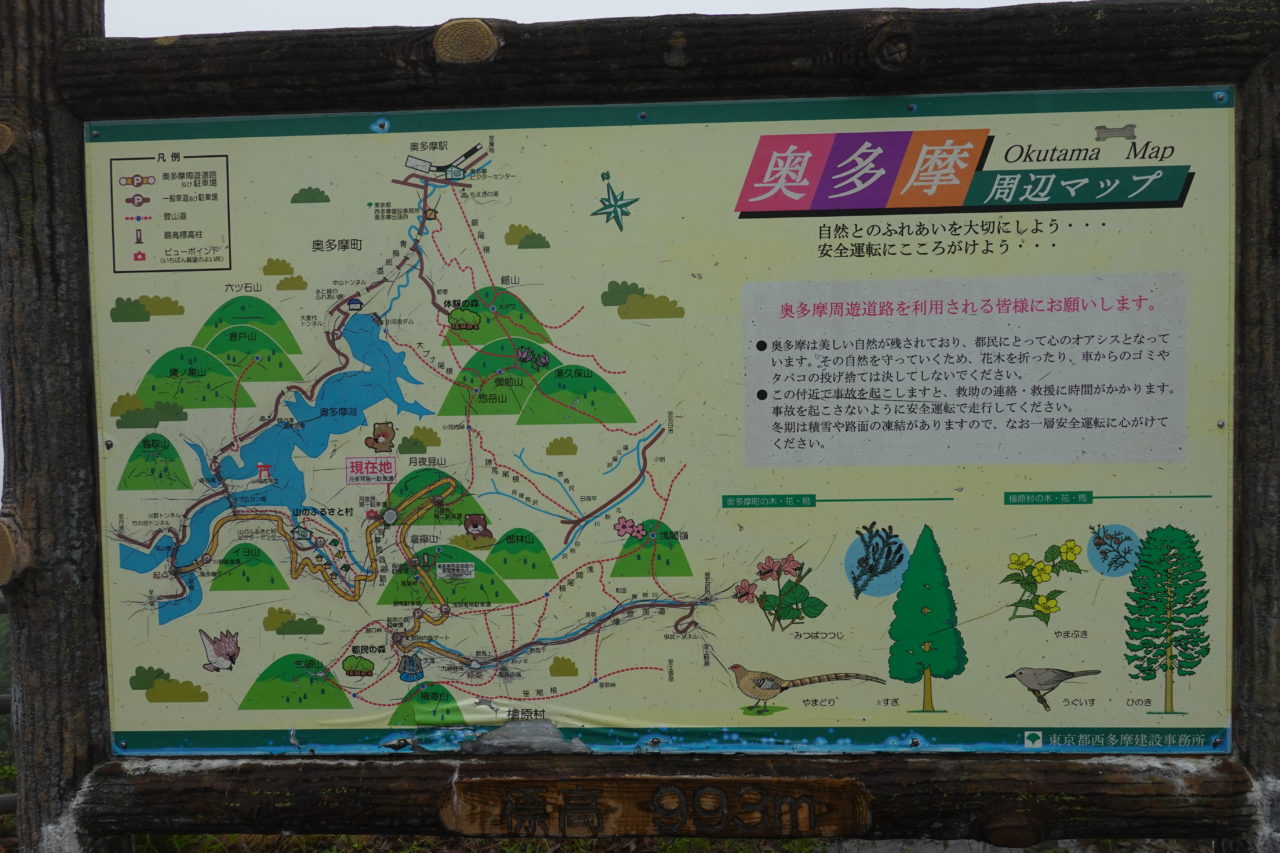
We switched to S mode’s B range, the strongest mode exclusive to the NISMO S, and tackled the corners of Okutama. In this mode, the engine is always generating electricity, instantly sending high current to the motor, delivering fierce response.
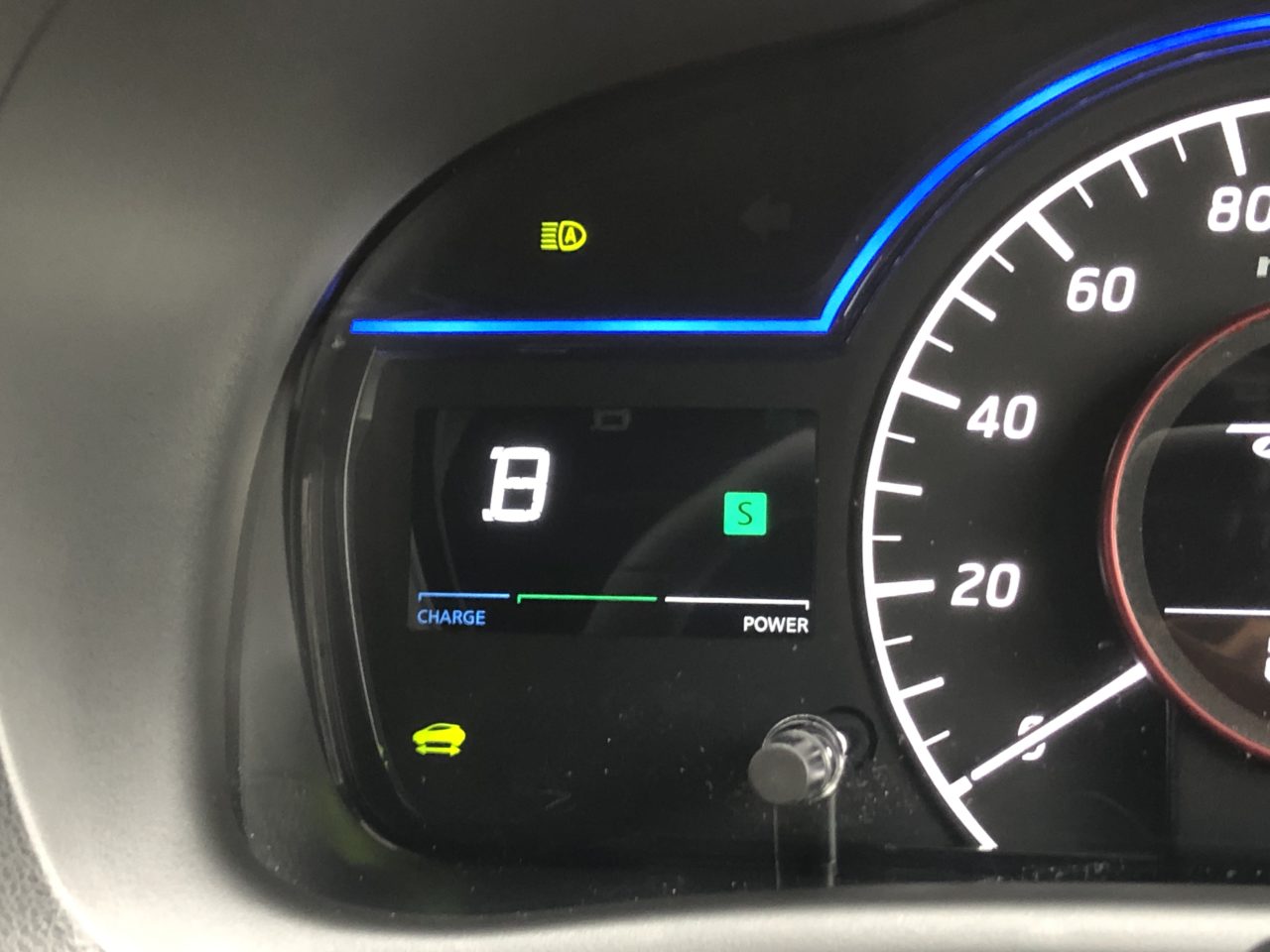
Opening the throttle carelessly on wet roads can easily cause wheel spin. Of course, traction control kicks in immediately, so it’s not too risky. The speed and precision of this control are incomparable to gasoline cars.
This is the power of the electric motor. It instantly cuts power and skillfully controls the borderline between spinning and gripping.
Regenerative braking is strong, so you rarely need to use the brake before corners, allowing smooth deceleration and thrilling acceleration out of corners. The more you master regenerative braking, the smoother your driving becomes, and if you drive well, you can reduce pitch (front-to-back body movement), making you feel like a better driver.
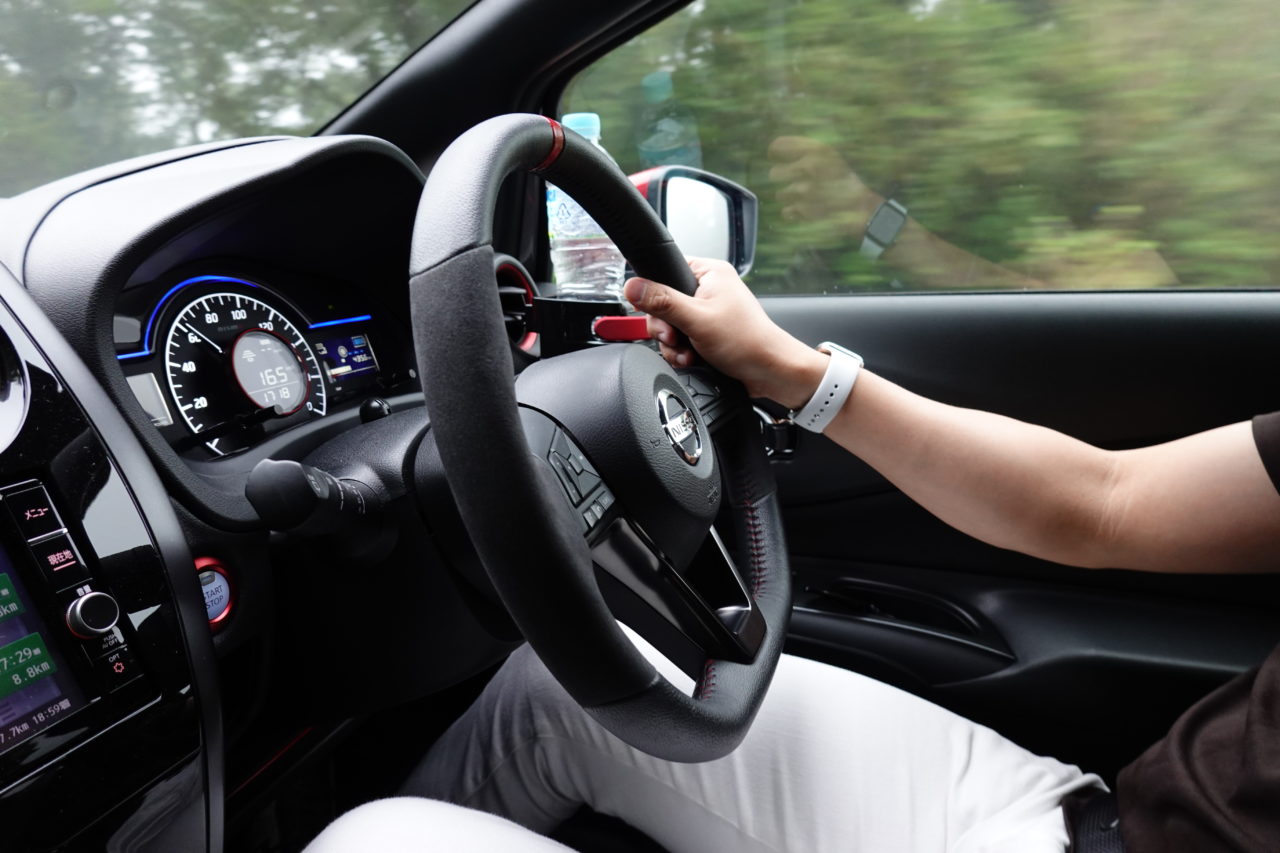
On the other hand, if you drive with abrupt throttle on/off, the strong regenerative braking increases pitch, causing jerky driving that can lead to motion sickness.
Therefore, when driving e-power, it’s better if you can smoothly press and slowly release the accelerator rather than just on/off.
Later, we switched to Normal mode and drove using the brakes normally like a regular car. For tight corners, S mode is sportier and better, but on medium-speed sections with gentle curves, Normal mode is preferable because regenerative braking is minimal, so speed doesn’t drop easily, allowing a more flowing drive.
From Yamanashi to Nagano
After fully enjoying the Okutama Loop Road, we decided to head toward Yamanashi. We hadn’t booked a hotel, so it was a spontaneous trip. Looking at the touring map, we picked a nice road and headed west, passing through Kofu and toward Kai city.
Since this area is familiar, we had some idea of the roads. We headed north on the Imogadake Wide Farm Road, aiming for Kiyosato, but somehow ended up at Mizugaki Lake (Shiokawa Dam). I had mistakenly come here before in a Boxster, so I guess I’m drawn to this place (laughs).
We took a break at Mizugaki Lake, then planned to cross the mountains westward, but the roads looked narrow and many sections were closed due to heavy rain, so we gave up and returned toward Kiyosato.
Though it was cloudy and Yatsugatake didn’t show its face, we enjoyed the nostalgic townscape of Kiyosato while heading north on Route 141, then turned onto Prefectural Route 480 toward Matsubarako with the NISMO Note.
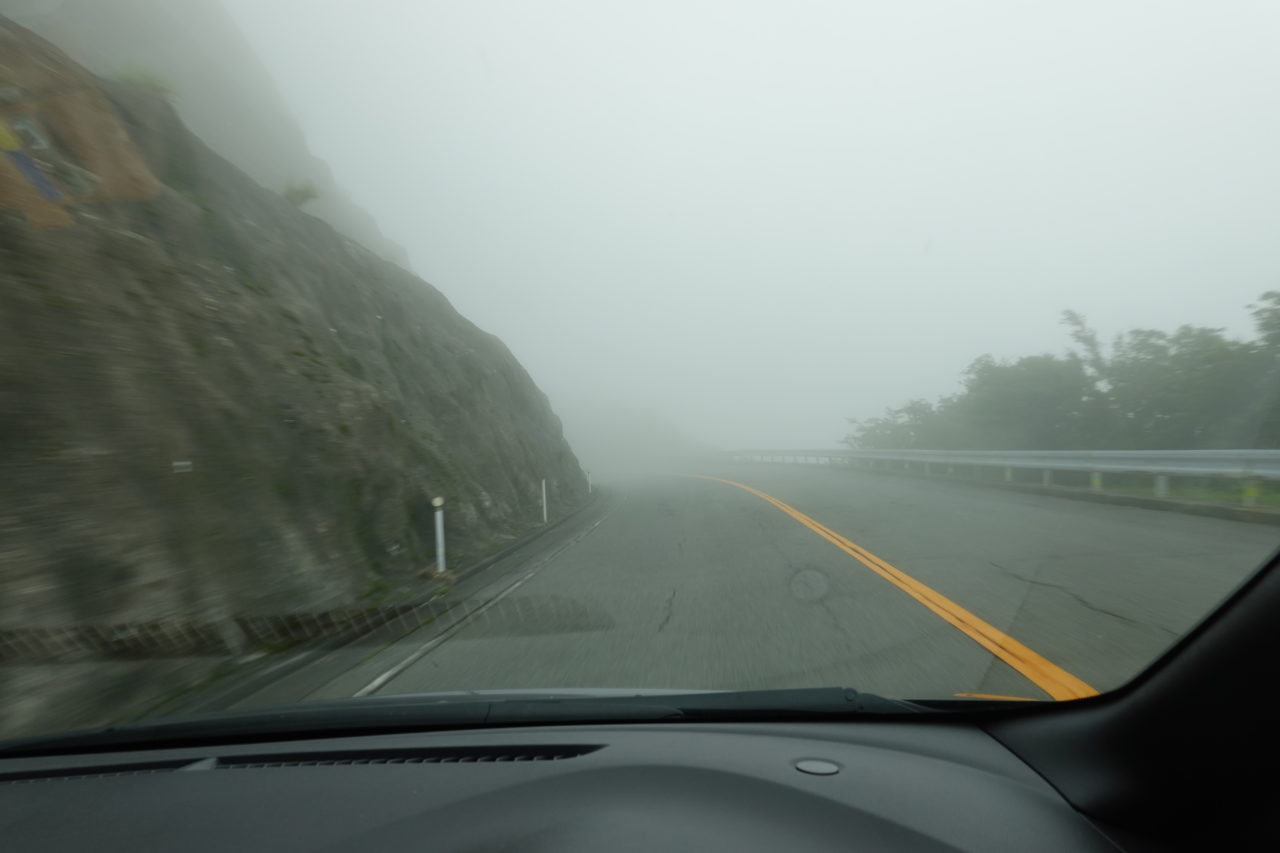
Yatsugatake View Road
This road running east to west across Yatsugatake is one of my personal favorites. The weather was so-so that day, so traffic was light, and again we had the road almost to ourselves.
We enjoyed the winding roads, and on long uphill sections, I floored the accelerator. The car still delivered strong acceleration, but after repeating this, the power meter on the instrument panel showed shorter peak times and the acceleration tapered off quickly.
It seemed the generator couldn’t keep up. The battery still showed about two bars left, but to avoid fully draining it, the power was automatically limited.
So, when I drove with the accelerator about halfway pressed, the power meter stayed at max without cutting back.
I’m not sure of the details, but the accelerator opening and power output in S mode don’t seem to be directly proportional. So there’s no need to go full throttle; half or slightly more than half throttle delivers nearly maximum power.
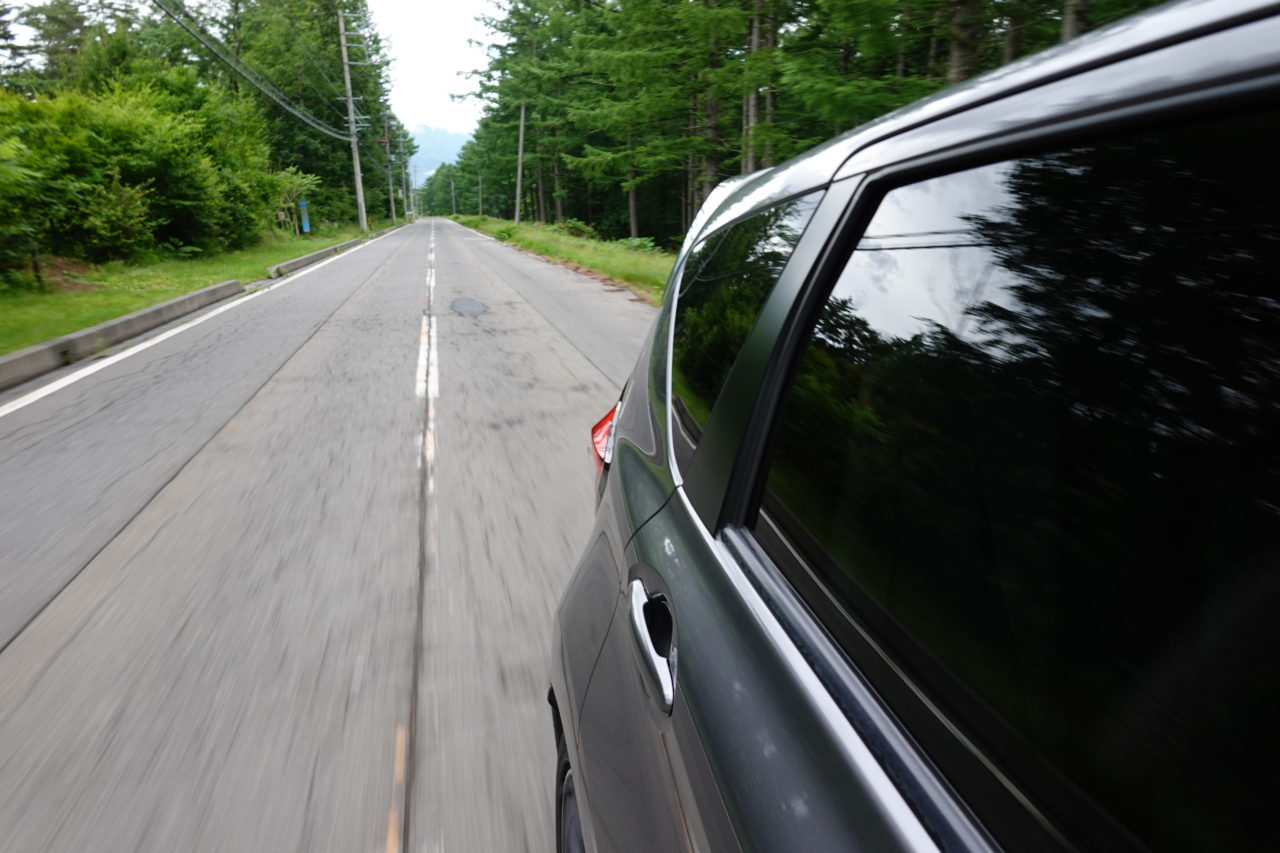
Having figured out the power control trick, I climbed steep slopes trying to maintain max power as long as possible. While resting in a parking spot, I heard a humming fan noise from under the passenger seat—my first time noticing this.
The Note’s drive battery is under the seat and is cooled by a fan. After using a lot of power on mountain roads, the battery must have heated up.
After a while, the fan stopped and we resumed driving. Since the rest of the route was downhill, the battery was charged by regenerative braking and showed full charge. Then, the Note can’t store more electricity, so it spins the engine with the motor to consume excess energy.
That humming sound is normal and similar to engine braking noise in a regular car.
The NISMO Note is still fast on downhill runs. Regenerative braking acts as a perfect brake, allowing confident driving, and the suspension keeps up well with tight corners. It’s front-wheel drive but shows no understeer or torque steer. The handling feels very natural.
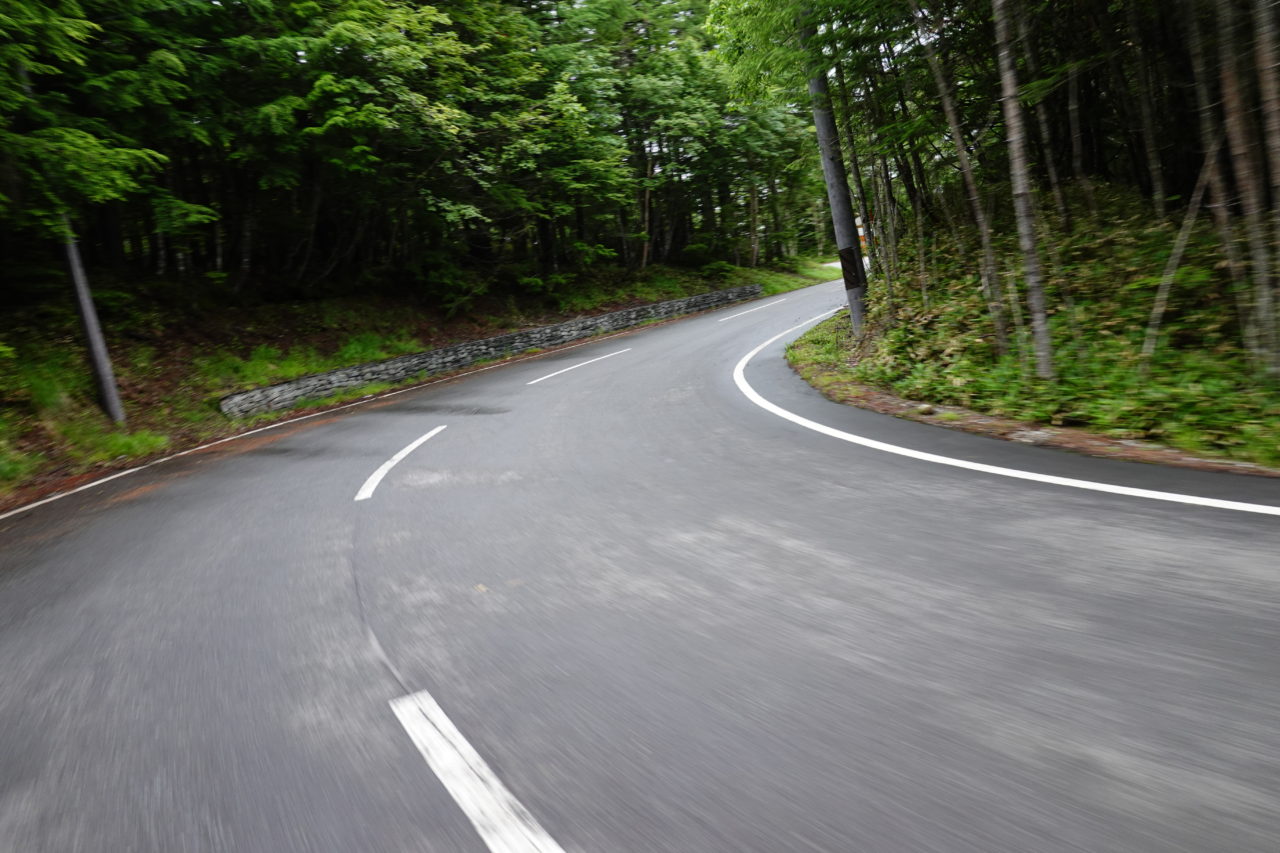
That said, it doesn’t have the cornering speed of a Porsche. I think this is largely due to the tires. The YOKOHAMA S Drive tires aren’t bad but lean more toward longevity than performance. They feel like hard tires in Gran Turismo games—okay but not aggressive.
Interestingly, when driving this route in a Porsche, even when not trying to go fast, you quickly catch up to the car ahead. But on this trip, even driving at a decent pace, the gap to the car ahead didn’t close much. I think this is probably due to the different speed perception felt by the driver.
| Next page → The Kansai driver’s dream: Venus Line in Nagano! |
このブログが気に入ったらフォローしてね!


Comment ( 0 )
Trackbacks are closed.
No comments yet.